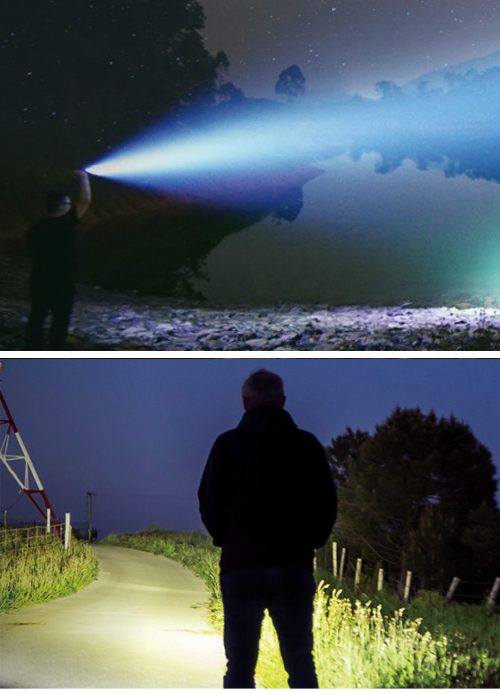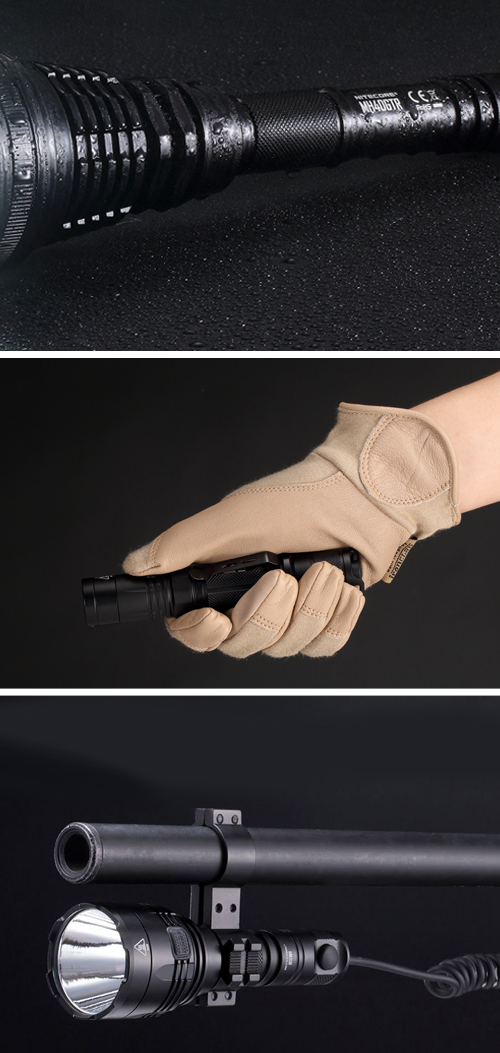Key takeaways:
- A hunting light with a long, focused throw will help you spot animals eyes in the dark more easily.
- Different body styles serve different purposes. Do you need a headlamp or a mounted light?
- Some animals cant detect certain colors of lights. Know your pray and plan accordingly.
Hunting Light Guide
If you want to hunt at night, the proper flashlight is a must-have and our hunting flashlight guide is here to help! Most prey has vastly better night vision than humans do, making hunting at night a potentially more dangerous outing. It doesn’t matter if you’re gearing up for your first hunt or are a seasoned huntsman, a good light can mean the difference between meat on the table or going home hungry. We understand there’s a lot to navigate when picking out a hunting flashlight. The good news is, our hunting flashlight guide breaks down the most important things to look for in your next hunting flashlight, so you can purchase like a pro!

Beam Profile for Hunting Lights
The beam of your hunting light is the most important factor. Beam profiles are generally broken into two categories, spot or flood beams. When hunting at night, you’re going to want to look for a spot beam that is both bright and can be thrown over long distances. This will help you create ideal conditions for scanning over long distances for eye shine or tracks. Once you’ve spotted your target, proper illumination will allow you to take a shot while keeping your distance.
Most NITECORE hunting flashlights in the 1000 to 1800 lumen output range are rated for distances between 200 to 300 yards. This is plenty of light and throw distance for most hunts. However if you’re aiming to really cover some ground, you should consider looking towards long throwers like the P30i (1093 yds) and MH40GTR (1097 yds!)

Body Style for Hunting Lights
The body style is where more personal preference, loadout capacity, and hunting style come largely into play. If you’re standing while shooting or just want to maximize your comfort and streamline your weapon’s profile, you may want to go with a smaller and more compact flashlight, like the MH12V2 hunting kit.
That said, there are times when a larger hunting light, like the MH40GTR is necessary. If you need to get longer run times or farther throw distances, you’ll have to settle for a larger footprint. One of our absolute favorite hunting lights, the NITECORE P30i. It bridges the gap between a standard tactical flashlight and bigger long throwers by utilizing a larger bezel while retaining a compact, single-cell body.
Whatever you choose, make sure it has hands free operation. Headlamps and rail or barrel mounted lights are a must-have. The good news is that all NITECORE hunting flashlights are constructed from lightweight, aero-grade aluminum to give you the best compromise between strength and weight. Our hunting flashlights have an IPX8 rating so you don’t have to worry about mud, dirt, or getting caught in the rain.

Light Colors for Hunting Lights
Different colored LEDs and outputs can give you an edge when it comes to hunting at night. Some prefer a hunting light with a cool white or neutral white output, for more natural lighting. Many hog, coyote and other varmint hunters swear by green or red lights.
What does red or green light do, you’re wondering? Certain animal’s can’t detect these colors the same way a human eye can, making the light virtually invisible. When using a light an animal cant detect, you’re much less likely to spook it, and that much more likely to bag it. Red and green light is also easier on human eyes, helping to preserve your own night vision.
If you want to explore different color outputs without committing to a dedicated hunting light, light filters are an easy and inexpensive way to convert your white beam to red, green or blue light. You might be surprised at how much it impacts your hunt!


Hunting flash light discussion is very awesome. All the qualities have this light. I like the the flash. Thank you for the post.